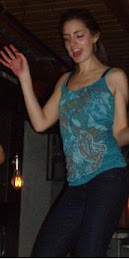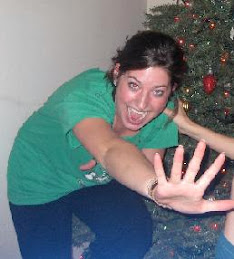Tarragona was a major Roman city (called Tarraco back then) so there was an ampitheatre, forum, and aqueducts. There are still a lot of Roman remains and most of the buildings in the original part of the city are built on top of Roman ruins.
The city is right on the coast and the ampitheatre is almost directly on the beach. Animal fights (with tigers, elephants, wolves, every animal the Romans could find) were held in the ampitheatre and since many of the animals were imported from North Africa, the ampitheatre's location made bringing in the animals easier. Aside from having animal fights, there were also gladiator fights and executions (of criminals and of Christians). So when the Visigoths, who were Christians, conquered Tarraco, they built a church inside the ampitheatre.
 This is the view of the ampitheatre from the top of the hill. Our hotel was located around where I took this picture from. There was a possibility of having a really gorgeous view overlooking the beach and the ampitheatre. My room looked out over some rooftops though which I thought was still cool because we were looking into a residential neighborhood. [Note: the hotel was surprisingly nice, especially for a school trip. The only bad thing was that our room smelled like sewage. We called room service and they sprayed half a can of toothpaste-scented disinfectant in our room. Did not work.]
This is the view of the ampitheatre from the top of the hill. Our hotel was located around where I took this picture from. There was a possibility of having a really gorgeous view overlooking the beach and the ampitheatre. My room looked out over some rooftops though which I thought was still cool because we were looking into a residential neighborhood. [Note: the hotel was surprisingly nice, especially for a school trip. The only bad thing was that our room smelled like sewage. We called room service and they sprayed half a can of toothpaste-scented disinfectant in our room. Did not work.] This was the view of the city from the top of the Roman castle. Very Mediterranean. One really cool thing about the terrain here is that you have the ocean and then you have a city and then you have mountains and it's all so close. The cities were designed like that for military purposes but it's nice to look at too.
This was the view of the city from the top of the Roman castle. Very Mediterranean. One really cool thing about the terrain here is that you have the ocean and then you have a city and then you have mountains and it's all so close. The cities were designed like that for military purposes but it's nice to look at too. I decided to take an artsy picture here (or so I thought). See the old man towards the left? I figured it was poetic in some way. Can't really figure out how though... the photo is open to interpretation. Really, I just like the blue rowboat.
I decided to take an artsy picture here (or so I thought). See the old man towards the left? I figured it was poetic in some way. Can't really figure out how though... the photo is open to interpretation. Really, I just like the blue rowboat. Just a note on ancient languages: we went to this Roman villa (interesting but ridiculous since we had to wear tunics-- see our guide to the right) and the whole tour was in Latin. I took Latin for three years and never heard it spoken since it is a dead language so it was crazy to hear it aloud. I was actually able to understand a lot of it probably because it's so similar to Spanish. Since I mentioned the villa, here is a picture of some artwork on one of the remaining walls.
Just a note on ancient languages: we went to this Roman villa (interesting but ridiculous since we had to wear tunics-- see our guide to the right) and the whole tour was in Latin. I took Latin for three years and never heard it spoken since it is a dead language so it was crazy to hear it aloud. I was actually able to understand a lot of it probably because it's so similar to Spanish. Since I mentioned the villa, here is a picture of some artwork on one of the remaining walls. 
The trip was from Thursday morning until Saturday night and we were touring from 9 until 5 or 6 every day. I learned a lot and saw cool things but I am SO GLAD to be back in Barcelona!!! (Only because I have missed updating this blog.)



.jpg)
.jpg)



No comments:
Post a Comment